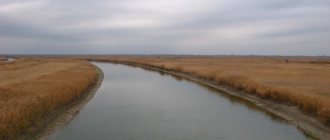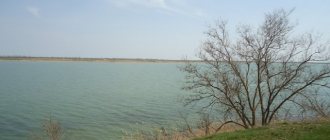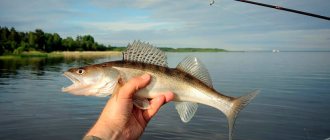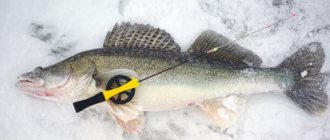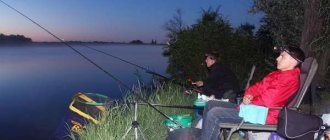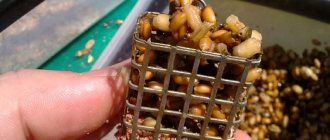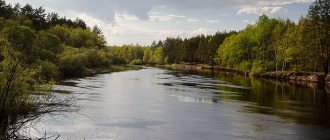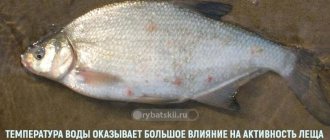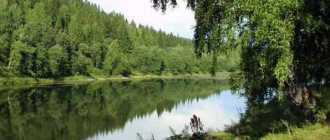Don basin
| Name | Manych (Western Manych) |
| Length | 219 |
| Pool area | 35400 km2 |
| Pool | Don/Azov Sea |
| Source | Kalaus bifurcation |
| Source height | about 27 |
| Source coordinates | 45°42′26″ S w. 44°03′03″ W d. |
| Estuary | Don |
| Mouth location | village Manychskaya (Bagaevsky district, Rostov region) |
| Mouth coordinates | 47°14′56″ S w. 40°15′14″ W d. |
Manych
(
Western Manych
) is a river in Kalmykia, the Rostov region and the Stavropol Territory, a left tributary of the Don. It originates in the place of the former Before the construction of the dam in the middle of the 20th century. bifurcation of the Kalaus River into Manych and Eastern Manych.
Length 219 km, basin area 35.4 thousand km², of which 2.1 thousand km² are occupied by lakes, mostly brackish and saline.
Snow food. Water mineralization is 2-8 g/l. Through the Nevinnomyssk Canal and the left tributary Bolshoi Yegorlyk, the waters of the Kuban River flow into Manych. The river waters are widely used for irrigation and fishing. Navigation is 179 km from the mouth.
general information
On the banks of the river there are a large number of settlements, entertainment and tourist complexes, recreation centers and so on. It is worth noting that the river has increased water mineralization, which affects the formation of surface vegetation, which is practically non-existent.
On the islands and shores there is significant vegetation of both cereal and forb types.
The total length of the river is about 200 km. The river is fed mainly by melted snow. The reservoir basin contains a huge number of lakes, rivers, estuaries, and so on. It is worth noting that the river waters are actively used in agriculture, for transporting people and goods. Manych is one of the most popular places among local and visiting fishermen.
Maps of settlements in the Veselovsky district (1)
| 1. |
To be honest, until recently I didn’t even know about the existence of the Veselovsky reservoir of the Manych River, a tributary of the Don. But it was on this reservoir in the Rostov region that the Russian Spinning Fishing Championship was held in 2010, in which our team participated - which means we had to get to know each other better. Competitions are competitions, and the reservoir turned out to be so interesting specifically for spinning fishing that a report on relatively free fishing could be of interest to a wide range of spinning anglers. Moreover, almost next to the reservoir there is the M4 highway, along which more than one thousand vacationers pass during the summer season. Why not stay for a couple of days? Fortunately, in the village of Vesely (the reservoir dam itself was built there), the tourist infrastructure is more or less developed, and several quite decent fishing and hunting bases have been built near the water.
So we, having arrived to practice with two cars on Veselovskoye on a hot August day, stopped at one of these bases. True, we were a little unpleasantly surprised by the prices for accommodation, almost like on the Black Sea coast during peak season. But this is for a separate house with all the necessary equipment (refrigerators, air conditioners). The rooms were simpler in the price list and cheaper. Having settled in, we didn’t waste any time and went to the water to launch the boats.
On the shore, we immediately encountered the most important unpleasant feature of the reservoir: not even the strongest east wind - and in the Don steppe this phenomenon is almost constant - dispersed a very bad wave on the water. And what upset us on the first day turned out to be a mere trifle, compared to the storm that we encountered a little later. This specificity must be taken into account for the future, and even in summer it is better not to go out on the water without life-saving equipment.
On the water, after the first hundred meters, we became more familiar with Veselovsky’s second misfortune, winding around a huge bunch of aquatic vegetation on the motor propellers. We have never come across such thick and strong “green stuff” anywhere else. Even with relatively powerful 15-horsepower outboard motors, it was not possible to walk through such grass wherever we would like. Moreover, even at a significant distance from the shore and over great depths, it was possible to fly into a floating bunch of long leaves of the “water plague” of Elodea, to free oneself from which one had to turn off the engine and lift the “leg” of the engine out of the water. But everything else that Manych greeted us with only made us happy.
Looking for pike perch.
Shortly before the trip, we tried to prepare as much as possible theoretically, studying information about the reservoir on local Internet resources. And most often in online reports it was about jig fishing for pike perch. This topic is very familiar to us, and we were happy to prepare for such fishing. We were unable to obtain maps of the depths of the reservoir, but we were able to quickly figure out the features of the simple underwater terrain using conventional echo sounders.
We were unable to find a pronounced bed of a flooded river, typical of most old large reservoirs. There are no local holes or snags either. The Veselovskoye Reservoir is more like a large lake, the dumps of which are deep (up to 8 meters) and are located close to the coastline. The places near the dam itself are good, but you can’t fish near it. We were able to find particularly interesting edges along the northern shore of the reservoir. The drops from three to five to seven meters were very steep, the bottom was hard, with shell rock, and predators were spinning everywhere. After tacking a little and deciding on the nature of the bottom, we began to look for concentrations of forage fish. In deep water, a predator is rarely attached only to the bottom relief. Usually there is always many times more of it near constantly moving schools of “white” fish: bream, silver bream, roach. “Bel” is quite easy to find using an echo sounder. We spent very little time and it was not in vain - it’s one thing to catch a couple of single predators from the edge, it’s quite another to catch them consistently for a long time. In the summer heat, forage fish stayed at depths of 5-6 meters.
We decided not to use heavy bottom gear on a reservoir without a current, and limited ourselves to loads of up to 16 grams. We try not to fish on any unfamiliar body of water with open hooks, and use rigs with non-snacking offset hooks. For medium-sized zander and pike silicone, the very sharp and flexible offset Wide Gap Worm No. 4/0 from EagleClaw is ideal. It may seem large to some, but when the bait is attacked by a fish weighing more than two kilograms, you don’t have to worry about the outcome of the fishing and the reliability of the hook. Many other offset fishermen “float” in power fishing - they simply lack rigidity. There were also no questions with baits - the reconnaissance was prepared with “edible” silicone baits YUM of the Wooly CurlTail series - those same “ribbed” three-inch baits that have already made a splash in both sports and amateur fishing, and the proven Relax. And at the very first promising point (there was a “bel” standing next to it), a medium-light jig caught a good, slightly over a kilogram, zander. Another cast - another pike perch.
With “multi” gear.
Recently, for jig fishing from a boat, I have been increasingly using casting (with a multiplier reel) tackle. It gives a small gain in fishing speed, provides more
greater sensitivity and power superiority when fighting large fish. Well, and of course, with a multi you can build a more balanced and sensitive “rod + reel” design. The lighter the tackle, the more sensitive it is. For example, a not very expensive, but quite reliable baitcasting reel with a low profile (“soap box”) - Sabalos from the American company W&M, with which I fished throughout the last season, its weight can easily be compared with top-class spinning reels from very famous brands - less than 220 grams. Most inexpensive spinning reels suitable for jig fishing generally weigh around 280-300 grams. It would seem that there is only 60-70 grams of difference, but the sensations from the wiring are completely different. And this can play a very significant role in light and medium jigs, when we perform the main action of the bait not by rotating the reel handle, but by playing along with the rod tip. By the way, with a baitcasting reel you can use slightly thicker fishing lines without compromising casting range and accuracy. Sometimes (in snags, on large fish), this becomes another very significant advantage of casting gear. My reel is spooled with 25lb cord. Enough everywhere.
Rods should be chosen as light as possible and “fit in the hand”, so their length for boat fishing is optimal within 2-2.3 meters. Anything longer does not provide the level of comfort that you quickly get used to. At first, when switching from the long rods that are popular in Russia to the “short” ones, some problems arise with hooking - they seem to be not enough to select the slack of the cord and cut through the mouth of the fish, but over time you get used to them. The hook is developed correctly, “to the shoulder”, and the difficulties go away. On Manych I fished with a 2.13-meter single-piece “multi” Skeet Reese Tessera Senko/Toad rod with a nominal weight of up to 14 grams. In reality, this “stick” can easily work with 30-gram weights - it is so powerful and “evil”. However, this is typical for most typical American bass rods.
The milky-white Veselovsky pike perch responded best to placing a 14-gram “eared” sinker with silicone on an offset at a fairly fast pace, with an aggressive double toss from the bottom with a sharp movement of the rod. It was the “soap box”, distinguished by its low center of gravity, offset to the rod blank, that made it possible to perform such a game without fatigue of the hand and wrist. The bites were very greedy and faithful. The “fanged” bait attacked not only during a pause, but also while it was lying motionless on the bottom. The rod clearly transmitted short, clear blows of the predator to the hand, and it was impossible to miss them. Fishing could continue throughout the hot August day. The only difference is that the size of the trophies was not very pleasing - most of them came across an even, about one-kilogram standard. But, as we expected, we simply “fell” at the peak of its activity. After just a week, the activity of the predator decreased almost significantly. And already in early September, during training immediately before the Russian Championship, only a few spinners could boast of catching pike perch. Although everyone was “combing” exactly those points and areas where we caught fish in the summer. The weather has changed, the wind has changed, the water temperature has changed, the food fish have moved - as is all typical for large reservoirs...
Pike.
We dedicated a separate day to her. We regularly combed the thick shallow grass with non-snacking baits and fished the endless walls of reeds. But the efforts of the two crews were in vain; none of us caught a single pike. According to local residents (who live directly in Vesely), it is caught mainly in the spring, when it comes to the shallows after the end of spawning. At any other time of the year the probability of its capture is extremely low. According to reviews from advanced local spinning anglers (mostly those who come for the weekend from Rostov and other large cities in the region), it is still possible to catch pike, and not only in spring, but also in late autumn.
They most often catch only large predators up to 7-8 kilograms, using jigs from great depths. Unlike pike perch, it is not at all attached to the coastal topography and can be found anywhere, but most often under the same schools of white fish, concentrated at maximum depths before the autumn and winter colds. The points of such sites are formed rather historically, and they cannot be calculated by logic. Only numerous trips to the reservoir allow you to stumble upon them sooner or later. The opening of such a place is a real success for any spinning jig player. Naturally, the coordinates of such points are kept in the strictest confidence. The modern spinning world is like this.
Striped bycatch.
The local perches turned out to be unexpectedly large. At first they diluted the pike perch catches. Moreover, some “humpbacks” competed with the latter in weight. They were not very large in size, but extremely well-fed, dense and heavy. Like crucian carp or carp – I’ve never seen anything like them anywhere else. At some point, we realized that it was possible to catch large perch on Veselovsky in almost greater quantities than “fanged” ones. We tried to switch to perch diverting gear, and immediately got a positive result.
A light “sports” retractable leash with an average weight of “striped” fish of three to four hundred grams was clearly not very justified; it would take too much time to fish out the trophy. Windy weather also made adjustments to the construction of the gear. Therefore, pike and zander options adapted on the fly were in use. Although I even found a special rod for this purpose - Drop Shot/Split Shot Tessera up to ½ ounce, again from bass pro Skeet Reese. To combat such weighty humpbacks, a specialized bass “stick” turned out to be just the thing.
The sinker of the diverter lead weighing 25 grams made it possible to perfectly fish all the simple bottom terrain without feeling any interference from a strong side wind. A meter-long fluorocarbon leash with a thickness of 0.24 mm provided the necessary strength and was practically not tangled. In such conditions, the main braided line should not be too thick, and we limited ourselves to 0.10-0.12 mm (Salmo Braid Elite or EagleClaw), thereby eliminating the strong windage of the tackle and noticeably gaining in casting range. Small YUM Walleye Grub twisters in dark (for cloudy water) colors were ideal as bait. The Mann's and Relax sports "inchers" turned out to be too small for Veselov's perches.
The wiring worked best when complex, with sharp but short throws of the sinker, and a very slow overall forward speed - in fact, the bait, equipped with a light offset hook, danced almost in one place. The perch actively showed interest in the twister, “butted” it, bit it, and sooner or later swallowed it.
"Texas" equipment.
Having had our fill of dragging the “Rostov bass” at depth, we decided to check out the shallow water areas of the reservoir. Large perch quite often hang around tufts of grass, and things are going well with it at the Veselovsky Reservoir: in the sense that there is a lot, a lot of it. For such conditions there is only one remedy: a “Texas” rig with a streamlined sliding bullet sinker on the fishing line and “edible” silicone on an offset hook. Such installation can be carried out relatively easily (rather, dragged) through any underwater thickets and wilds. Microjigs and wobblers showed their futility after the very first casts - they immediately collected a whole bunch of greenery.
Surprisingly, among the baits, the ones that brought the most bites were silicone worms, and not the thin ones with a twister tail, but the thick, fleshy Senkos, which are actually aimed primarily at American largemouth bass. Manya perches were very similar to their overseas cousins. One problem is that we took very little of these baits with us, and the meager supplies were accidentally grabbed by GaryYamamoto and were very quickly eaten by the local evil “striped ones”. Let's take this into account for the future.
The “Texas” wiring is not fundamentally different from the usual jig wiring, except that there are a little more sharp pullings in the cycle. And even then out of necessity: to pull the grass off the “bullet” and the bait. The time the worm lies on the ground can be increased, taking into account its conditional “edibility”. The predator was often tempted by it during a long pause. We found the optimal weight of the “bullet” sinker to be within 10-12 grams. No additional beads or acoustic disks were introduced into the equipment. It may be in vain, but, unfortunately, we did not have time for additional experiments.
Neighbours.
What else surprised the Veselovskoye Reservoir was the abundance of waterfowl and swamp game. It seems that hunting management in the area is at a fairly high level. All this is good, but we can draw a cautious conclusion that when planning a trip to Vesely, you will need to make sure that it does not fall during the height of the hunting season. All hotels and tourist centers will be packed to capacity, and it will be unsafe to be on the water. There are too many poachers on Manych. Nets and crayfish traps found themselves “on the hook” all the time. Dark personalities with unkind views were also visible all day long. In addition to “wild” poachers, commercial fishing is also carried out on Veselovsky. But, despite the unpleasant neighborhood, we really enjoyed the trip. We will definitely come to Manych again. We really remember the local perches.
You can plot a route for your car by entering the name of the place from where you want to leave and where to get there. Enter the names of points in the nominative case and in full, with the name of the city or region separated by a comma. Otherwise, the online route map may show the wrong path.
The free Yandex map contains detailed information about the selected area, including the boundaries of regions, territories and regions of Russia. In the “layers” section, you can switch the map to “Satellite” mode, then you will see a satellite image of the selected city. The “People's Map” layer shows metro stations, airports, names of neighborhoods and streets with house numbers. This is an online interactive map - it cannot be downloaded.
Nearest hotels (hotels, hostels, apartments, guest houses)
View all hotels in the area on the map
Five nearby hotels are shown above. Among them there are both regular hotels and hotels with several stars, as well as cheap accommodation - hostels, apartments and guest houses. These are usually private economy class mini-hotels. The hostel is a modern hostel. An apartment is a private apartment for daily rent, and a guest house is a large private house, where the owners themselves usually live and rent out rooms for guests. You can rent a guest house with an all-inclusive service, a bathhouse and other attributes of a good holiday. Check with the owners for details here.
Usually hotels are located closer to the city center, including inexpensive ones, near the metro or train station. But if this is a resort area, then the best mini-hotels, on the contrary, are located further from the center - on the seashore or river bank.
Nearest airports
Features of fishing on the Manych River
The bottom and depth of the river are very heterogeneous, since there is both a calm water surface and rapids, whirlpools and creeks. The variety of fishing here is truly great.
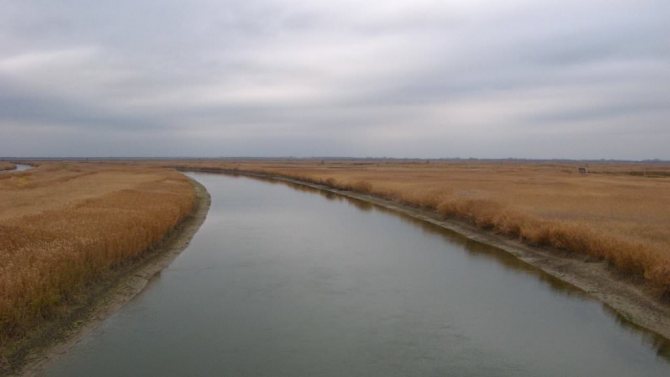
The river is not wide, however, even a fairly experienced fisherman will not be able to immediately determine which section of the river will have a good bite.
In this regard, it will be even harder for a beginner, so it is better to go fishing with experienced comrades.
You can try to seek advice from local fishermen, however, events here can develop in two ways:
- You will be able to get truly valuable advice.
- A local fisherman will laugh at the unlucky fisherman with a serious look.
It is worth noting that crayfish are found in decent quantities in the river - this indicates a fairly good ecological situation. There are quite a lot of areas for active recreation here.
In the Manych area you can find:
- houses of local residents for rent;
- tourist centers;
- recreation centers;
- dispensaries;
- sanatoriums;
- fishing camp;
- just a fairly flat river bank where you can put up a tent and relax like a savage.
As in most other places, fishing with nets is strictly prohibited here. You can use a spinning rod or an ordinary fishing rod.
Location and characteristics of the Manych River
The Manych River is a tributary of the Don and passes through the Rostov region, Kalmykia and the Stavropol Territory.
Main Feature:
- length is two hundred nineteen kilometers;
- average depth six meters;
- has rifts and rapids;
- not wide;
- winding in places;
- mostly calm;
- snow nutrition;
- environmentally friendly.
Note: according to UNESCO, Manych is the cleanest body of water in Europe.
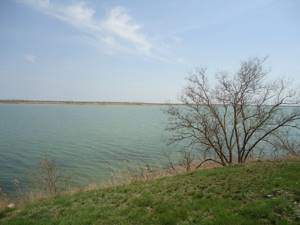
Dependence of the bite on the fishing season
In the summer, literally immediately after the ice has gone from the river, almost all species of fish found in the river are actively caught.
Pike, which need to fatten up after the cold weather they have endured, bite best in the spring months. Closer to summer, pike perch and other predatory fish begin to swallow bait well.
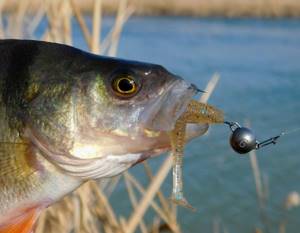
Feeder fishing is also very popular here, with the help of which they catch carp, bream, carp, crucian carp and so on.
It is worth noting that during the winter months, fishing on this river is a completely unpredictable experience. First of all, it’s worth starting with the fact that feeding at this time is a process that can cause harm.
The fact is that fish move under the ice in schools, trying not to freeze for a minute. If you throw bait, the fish will simply eat and go to another place, as a result of which you will need to make a new hole. In severe frosts, fishermen are often left without a catch at all, because during this period the fish hibernate.
There are a wide variety of baits and baits used. Most often used for these purposes:
- cereals;
- canned corn;
- boiled potatoes;
- millet;
- barley;
- semolina and so on.
In terms of bait, bloodworms or dung worms are most often used. Also, the river contains a large number of predatory fish, which are reared using spinning rods.
Azov-Caspian waterway
The idea of creating a waterway between the Sea of Azov and the Caspian Sea has a long history. In the 18th century, Academician Pallas substantiated the possibility of its implementation by connecting the seas along the valleys of the Eastern and Western Manychi rivers.
In 1932, the Council of People's Commissars of the USSR decided to develop a project for a waterway connecting the Azov and Caspian seas. In 1934-1937, a working design for the connecting channel was developed. The canal route is laid along the Kuma-Manych depression. The project was partially implemented.
In 1936, the Ust-Manychsky hydroelectric complex was built, and in 1941, the Veselovsky and Proletarsky hydroelectric complexes, which formed the reservoirs of the same name. The Great Patriotic War interrupted work on the creation of the Azov-Caspian waterway. In the post-war years, the construction of a canal through Kalmykia to the Caspian Sea was abandoned. It was decided to connect the Don and Volga and in 1952 the Volga-Don shipping canal was put into operation. At the end of the 1940s, Lake Manych-Gudilo was added to the chain of reservoirs. The navigable lock waterway was 329 kilometers long. Due to the fact that Lake Manych-Gudilo was low-water and dried up almost completely in dry years (1886, 1936), canals were built to transfer water from the upper reaches of the Kuban River and the Tsimlyansk Reservoir. The Manych waterway is currently operated with very small cargo turnover of local importance.
Popular recreation centers: conditions and prices
"Cool place"
The recreation center “Cool Place” is located on the banks of the Manych River next to the Veselovsky Reservoir at a distance of about 100 km from Rostov-on-Don. There is an asphalt road leading directly to the base. In total, it occupies just over 3.5 hectares.
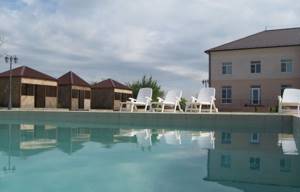
The price of accommodation on the territory of the base includes the use of a summer swimming pool, a room and guarded parking. For a one-room room on weekdays you will have to pay 2,000 rubles per day; on weekends or holidays the cost increases by 500 rubles.
A three-room suite will cost 6,000 rubles and 6,500 rubles per day on weekdays and holidays, respectively. If you wish, you can order accommodation in a log house. It will cost 6,000 rubles and 7,200 on weekends or holidays.
"Portoflot"
The recreation center is located near the village of Vesely, in close proximity to the Veselovsky reservoir. It occupies a fairly large area and can accommodate up to 200 residents simultaneously. It is worth noting that you can either rent a hotel room, a house, or sleep in an ordinary tent.
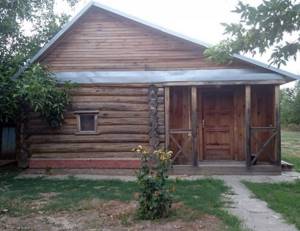
Fishing from the pier of the recreation center will cost 200 rubles. In this case, if necessary, you can use the services of an instructor.
"Cheerful Manych"
The base is located in the village of Bolotovo, which is located in the Martynovsky district of the Rostov region at a distance of just over a hundred kilometers from Rostov. The recreation center offers its guests to stay in small houses for 1,500 rubles per day.
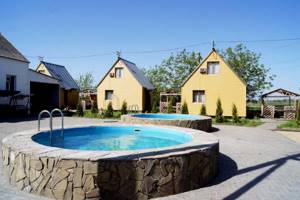
You can fish in any season using absolutely all the gear that the fisheries inspection allows.
In addition to fishing and other outdoor activities, the base has a sauna, various board games, and billiards. If necessary, everything that can be rented.
If a person does not have fishing experience, then he can use the services of a huntsman.
"Quiet Marina"
This base is located near the village of Manychstroy. It is located 87 kilometers from Rostov. Guests of the base are accommodated in small cozy cottages, accommodation in which costs at least 2,000 rubles per day.
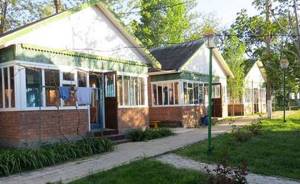
On the territory of the base there is a guarded parking lot, a sauna, a sports ground, barbecues, gazebos and so on.
"High"
This recreation center is located in the Veselovsky district near the village of Sredny Manych. The easiest way to get to it is through Rostov-on-Don - for this you will have to travel about 85 kilometers. This is one of the cheapest recreation centers, but the quality of service is at a quite decent level. Accommodation in a small house will cost an average of 500 rubles per person per day.
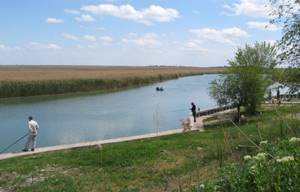
This price, in addition to accommodation, includes a number of additional services: an outdoor sports ground; use of a gazebo and barbecue; guarded parking lot and so on.
If necessary, you can use the services of a huntsman or a fishing instructor. This is done for a fee.
"Bystryansky Estuary"
This recreation center is located on the banks of the Manych River. Vacationers are offered accommodation in comfortable double rooms, each of which has a TV and refrigerator.
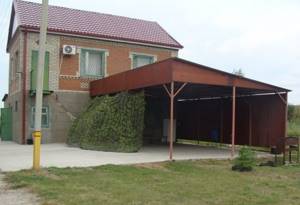
The package of services includes free parking in a guarded parking lot, a large number of barbecues, several gazebos, and so on. About 30 people can be accommodated on the base at the same time. Renting a house or a room in a house costs from 250 rubles per person per day.
Manych
M anych (Western Manych) is a river in the European part of Russia, in the Republic of Kalmykia, in the Rostov region, Stavropol region ; left tributary of the Don.
The name of the river comes from the Turkic word manach - “bitter”.
The first reliable information about the river is given in the “Book of the Great Drawing” (1627). The study of Manych began in 1773 (expedition of P.S. Pallas).
The river basin is located within the Kuma-Manych depression. Just 4–5 thousand years ago there was a strait here that connected the Caspian and Azov seas. After its disappearance, the Manych, which flows into the Don, and the Eastern Manych, flowing east to the Caspian Sea and getting lost in the sands, were preserved. At the site of the strait there are also many salt lakes, the largest of which is Manych-Gudilo. The length of Manych (from the mouth of the Egorlyk River) is 219 km, the basin area is 35.4 thousand km2. Western Manych is the name given to the section of the river from the modern mouth of the river. Kalaus to the lake Manych-Gudilo, the length of the river from the modern mouth of the Kalaus to the mouth of the Manych is 420 km. The Manych is the 3rd largest tributary of the Don by area (after the Seversky Donets and Khopra) and the 5th largest tributary of the Don[*]. The largest tributaries of the Western Manych are the Bolshoi and Middle Yegorlyk. Recently, the source of Manych is often called the source of Kalaus or Egorlyk. The source of Kalaus is located in the southern part of the Stavropol Upland (Mount Bryk) at an altitude of 460 m. The length of Manych with Kalaus is 856 km, the basin area is 48.45 thousand km2. From the source of Yegorlyk at an altitude of 800 m (Stavropol Upland, Mount Strizhament) to the mouth of Manych is 629 km.
The density of the river network decreases from south to north from 0.4–0.5 km/km2 on the northwestern slopes of the Stavropol Upland to 0.1–0.2 km/km2. Within the basin there are four drainage areas with a total area of about 3 thousand km2. 1,630 ponds with a total area of 64.7 km2 were built in the river basin. In the Manych valley since the 1940s. The Proletarskoye, Veselovskoye, and Ust-Manychskoye reservoirs operate. Three reservoirs have also been created on Yegorlyk (Egorlykskoye, Bufernoye, Novotroitskoye). The creation of a dam at the mouth of the Kalaus prevented the flow of water from this river into the Eastern Manych (Chogray Reservoir). The transfer of part of the Kuban water flow to Yegorlyk and Kalaus, the Don to Manych required the creation of numerous canals (Nevinomyssky, Pravoegorlyksky, Divnensky, Azovsky, Rostovsky, Proletarskaya branch, etc.). Every year, 1.75–1.92 km3/year is redistributed from the Kuban and Don basins to the Manych basin. The use of the basin's fertile soils for agriculture has led to a significant reduction in the number of small rivers.
The average annual air temperature rises from 8.9ºС (northwest of the basin) to 10.2ºС (south-east of the basin). The amount of precipitation varies from 315 mm in the eastern part of the basin to 623 mm in the Stavropol Upland. During the warm period of the year, 62–71% of the annual precipitation falls. The soil cover is dominated by chernozems of varying thickness. In the southeast they are replaced by chestnut soils. The Manych basin is entirely located in the steppe zone. In the east it is adjacent to the zone of Caspian semi-deserts.
The average long-term water flow during the period of natural flow (before 1932–1934) was 4.64 m3/s near the city of Proletarsk (flow volume 0.146 km3/year; flow module 0.12 l/(s×km2); runoff layer 3 .8 mm). Currently, the river's water flow and its intra-annual distribution depend on the flow of water through canals from the Kuban and Don, as well as the use of large and small artificial reservoirs in the Manych basin. The current average annual water flow is 16.8 m³/s (flow volume 0.53 km3/year). The intra-annual flow distribution has become more uniform; the share of runoff during the spring flood period decreased. During this period, up to 50% of the river's annual flow passes. During the low-water period, the river stopped drying up.
Water turbidity under natural conditions averaged 82 g/m3; in Kalaus it reached 5.2 kg/m3. After part of the Kuban runoff was transferred to the Manych basin, the turbidity of the water decreased, and the sediment runoff to Yegorlyk increased by 20 times, to Kalaus by 3–5 times. Below the reservoirs, the turbidity of the Manych water has decreased significantly due to the sedimentation of suspended particles.
Since there are salt marshes in the river basin, the mineralization of the water in the river is high. In different parts of the pool it varies from 1.5 to 7 g/l. In the Ust-Manych and Veselovsky reservoirs it is less - 0.5–1.5 g/l, and in the eastern part of the Proletarsky reservoir it is much more - 25 g/l. In the chemical composition of the river waters. Manych is dominated by sulfate, chloride and bicarbonate ions. The ion flow at the river mouth is 1.55 million tons.
The average annual water temperature in the river varies from 10.8ºС to 11.7ºС. The minimum temperature is observed in January–February (0–2.5ºС), the maximum in July (31.7ºС). The first ice phenomena occur in the first ten days of December. Ice cover forms in the second decade of this month. The ice thickness reaches 78 cm. The river opens in the first ten days of March. The duration of freeze-up varies from 58 to 143 days.
The river's water resources are used for drinking and industrial water supply and irrigation of agricultural land. The river is navigable from the mouth to the city of Proletarsk. The annual electricity generation at the hydroelectric power station is 143.7 kW/h. In the reservoirs on Manych, pike perch, bream, ram, black bream, silver bream, sabrefish, carp, and silver carp are of commercial importance.
Large settlements on the banks of the Manych: Art. Manychskaya, village Vesyoly, Proletarsk.
N.I. Alekseevsky
Reviews from tourists
Evgeniy, 34 years old : “Wonderful vacation - beautiful scenery, good bite. Fishing is best during the morning hours of September. Now I will go there fishing every year.”
Vladimir, 27 years old: “I’ve been relaxing on the river bank for several years in a row. When we go fishing with friends, we immediately take a smokehouse with us. We smoke the caught fish right there on the shore.”
Semyon, 45 years old: “The Manych recreation center is distinguished by friendly service, quality recreation and low prices. I always rent a boat and catch bream and burbot.”
